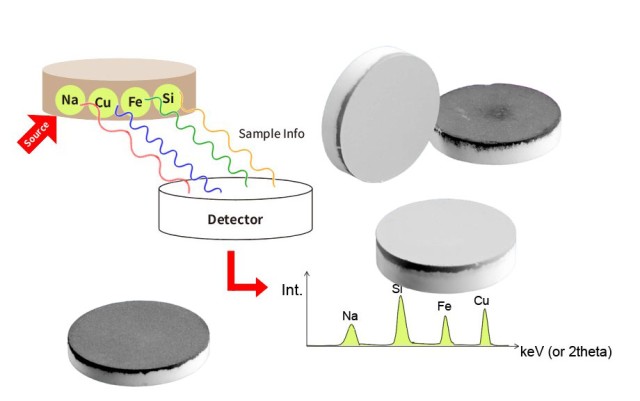目录
XRF 样品制备简介
在 X 射线荧光 (XRF) 分析领域,样品制备的精度对于获得准确可靠的结果至关重要。颗粒压制在这一过程中起着至关重要的作用,可确保样品均质并为分析做好准备。然而,粒度不当、污染、粘合剂选择不当和压力应用不足等常见问题都可能导致重大误差。本文将深入探讨铂压 XRF 样品制备过程中最常见的误区,并提供切实可行的解决方案来克服这些误区,最终指导您实现最高精度的 XRF 分析。
粒度:成功制备颗粒的基础
粒度是制备压制颗粒的关键因素,对分析结果的准确性和可靠性有重大影响。实现理想的粒度(通常小于 50 微米)至关重要,原因有以下几点。首先,较小的粒度可确保样品内部更均匀。如果颗粒过大或大小不一,会导致颗粒内元素分布不一致,从而导致分析数据偏差。
均匀粒度的重要性
均匀的粒度至关重要,原因有以下几点。颗粒越小,压制颗粒时的压实和结合效率越高。这种均匀性可确保样品均匀压缩,从而获得更一致、更可靠的分析结果。相反,较大或不同的颗粒尺寸会在颗粒内产生异质性,颗粒的不同区域可能含有不同浓度的元素。这种异质性会导致读数错误,因为分析设备可能无法均匀地对整个颗粒进行采样。
实现理想粒度
要达到小于 50 微米的理想粒度,可以采用各种实验室技术。常见的方法包括在压制前使用破碎机、研磨机和碾磨机来减小样品的粒度。通常认为粒径在 40 微米或以下是可以接受的。这些技术可确保样品被精细研磨,使最终的颗粒具有更好的均匀性和一致性。
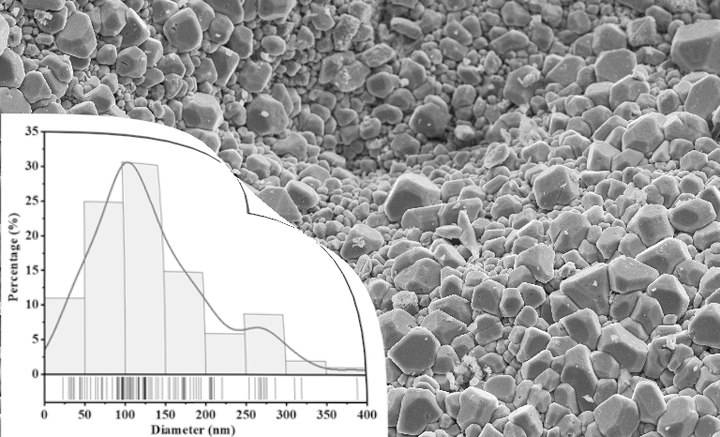
粒度对分析结果的影响
粒度对分析结果的影响怎么强调都不为过。较小的粒度对于生产出能提供最佳分析结果的颗粒至关重要。例如,在 X 射线荧光 (XRF) 分析中,样品内元素的取样深度或临界逸出深度取决于能量。钠(Na)等波长较长的元素比铁(Fe)等波长较短的元素逸出深度要小。这意味着 Na 分析只能对样品的前 10 微米左右进行采样。因此,在这个浅深度内的任何异质性都会严重影响分析的准确性。
相反,较大或可变的颗粒尺寸会导致样品中的异质性。这些异质性会导致颗粒内的元素分布不一致,从而产生不可靠的分析数据。例如,如果颗粒中含有不同粒度的区域,分析设备可能无法均匀地对这些区域进行采样,从而导致测量的元素浓度不一致。
粒度控制的最佳实践
为确保获得最佳分析结果,必须遵循粒度控制的最佳实践。这包括使用适当的研磨和碾磨技术,以实现小于 50µm 的均匀粒度。制备过程中对细节的关注和一致性也至关重要。通过确保样品被研磨到理想的粒度,分析师可以最大限度地降低异质性风险,获得更准确可靠的分析结果。
总之,粒度是成功制备颗粒的基础。实现并保持小于 50µm 的均匀粒度对于确保样品的均一性至关重要,这反过来又会带来更准确可靠的分析结果。通过遵循最佳实践并密切关注制备过程,分析师可以显著提高分析数据的质量。
污染:XRF 分析中无声的破坏者
污染是 X 射线荧光 (XRF) 分析面临的最大挑战之一,尤其是在样品制备过程中。研磨阶段是容易发生污染的关键点,会导致不准确和误导性的结果。了解污染源、实施有效的预防方法并认识到污染的后果对于保持 XRF 分析的完整性至关重要。
污染源
XRF 分析中的污染有多种来源,但研磨过程尤其容易受到污染。在研磨过程中,来自样品制备仪器的外部成分可能会无意中进入样品中。如果研磨工具或容器在两次取样之间没有得到适当清洁,就会导致交叉污染。例如,以前样品的残留物可能会残留在研磨工具上,并转移到新样品中,从而改变样品的元素组成。
另一个常见的污染源是使用不适当的材料制备样品。例如,如果研磨工具是由可能脱落颗粒的材料制成,或者如果容器不是惰性的,这些材料就会将不需要的元素带入样品中。此外,实验室中的灰尘、湿度和化学蒸汽等环境因素也会造成污染。
防止污染的方法
在 XRF 分析中防止污染需要对细节一丝不苟,并执行严格的规程。最有效的方法之一是确保在每次使用前对所有研磨工具和容器进行彻底清洁和消毒。这可以使用与被分析材料相容的溶剂或专用清洁剂来实现。
另一种方法是使用惰性材料制作研磨工具和容器。硼硅酸盐玻璃或高纯度氧化铝等材料不太可能将污染物带入样品中。此外,在清洁的环境中工作也很重要,最好是在没有灰尘和其他潜在污染物的专用样品制备区。
对于粉末样品,必须小心制备比色皿和薄膜。用于 XRF 的薄膜有多种类型,为特定任务和设备选择最合适的类型至关重要。向供应商咨询有助于确保所选薄膜适合样品且不会引入污染物。

污染对 XRF 结果的影响
污染会对 XRF 结果造成严重后果,导致数据不准确、不可靠。如果样品在研磨过程中受到污染,XRF 仪器测得的元素组成将不正确。这可能导致错误的阳性或阴性结果、对数据的误读,并最终得出不正确的结论。
例如,如果要分析铅含量的样本被之前样本中的钙污染,XRF 结果可能会人为地显示出较高的铅浓度。这可能会导致对铅污染的误诊,对监管合规性和公众健康造成潜在影响。
此外,污染还会影响 XRF 测量的精确性和可重复性。如果在制备多个样品的过程中发生污染,结果的可变性可能会增加,从而难以比较不同样品的数据。这可能会破坏分析的可靠性,并影响从数据中得出的任何结论的有效性。
结论
污染是 XRF 分析中一个无声的破坏者,尤其是在研磨过程中。了解污染源、实施有效的预防方法以及认识到污染的后果,对于保持 XRF 分析结果的准确性和可靠性至关重要。通过在样品制备过程中一丝不苟、使用适当的材料和在清洁的环境中工作,研究人员可以最大限度地降低污染风险,确保 XRF 分析的完整性。
粘合剂的选择:均匀颗粒的关键
选择合适的粘合剂是制备颗粒的关键环节,因为它直接影响最终颗粒的均匀性和稳定性。粘合剂是将样品颗粒粘在一起的 "胶水",可确保颗粒在分析过程中保持完整,不会因粉末松散而污染光谱仪。颗粒制备过程中最常用的粘合剂是纤维素/蜡混合物,它们能与样品均匀混合,并在压制过程中有效地将颗粒粘合在一起。
粘合剂在颗粒制备中的作用
粘合剂在造粒过程中起着至关重要的作用,它能促进粉末样品形成具有凝聚力的颗粒。如果没有粘合剂,样品颗粒就不会相互粘附,导致颗粒松散不稳定,很容易破裂或污染光谱仪。粘合剂作为一种介质,可以让颗粒粘在一起,形成一个坚固均匀的颗粒,在分析时不会受到松散颗粒的干扰。
常见粘合剂类型
纤维素/蜡混合物
纤维素/蜡混合物因其有效性和易用性,是颗粒制备中使用最广泛的粘合剂。根据分析的具体要求,这些粘合剂通常以 20-30% 的比例添加到样品中。纤维素成分为颗粒提供结构上的完整性,而蜡则确保颗粒相互粘附。这种组合可以形成既坚固又稳定的均匀颗粒。
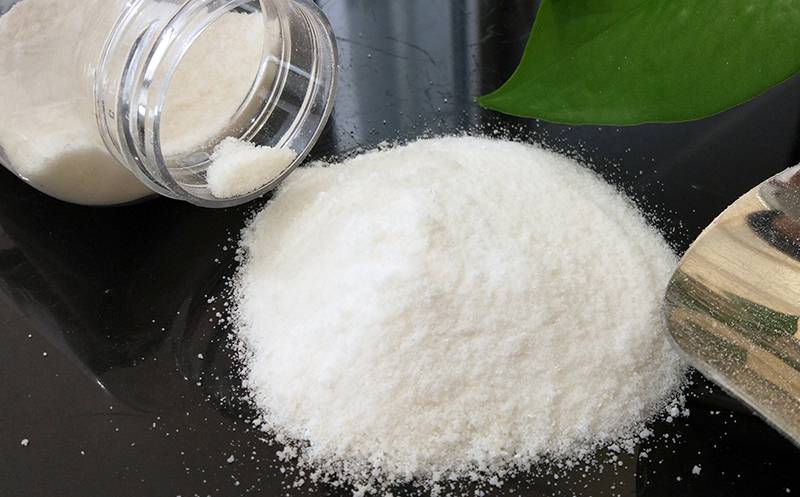
丙烯酸粘合剂
在某些情况下,丙烯酸粘合剂可用作纤维素/蜡混合物的替代品。不过,丙烯酸粘合剂与样品混合均匀的难度较大,通常需要手动混合,而不是在研磨过程中自动添加。这可能会导致最终颗粒的不一致性,因为粘合剂可能无法均匀分布在整个样品中。
预混合颗粒
为了方便起见,有些粘合剂是以预混颗粒的形式提供的,可以在研磨过程中自动添加到研磨机中。这些预混合颗粒可确保粘合剂在整个样品中均匀分布,从而获得更一致、更可靠的结果。不过,在选择预混合颗粒时应仔细考虑,确保其与分析的特定样品相容。
选择最合适的粘合剂
为特定样品选择最合适的粘合剂取决于多个因素,包括样品类型、所需的颗粒强度以及分析的具体要求。以下是选择粘合剂时需要注意的一些关键因素:
样品类型
不同的样品可能需要不同类型的粘合剂。例如,难以研磨或含有难研磨相的样品可能需要一种能更好地与样品均匀混合并将颗粒固定在一起的粘合剂。在这种情况下,纤维素/蜡混合物可能比丙烯酸粘合剂更有效。
颗粒强度
最终颗粒的强度是另一个重要的考虑因素。强度较高的颗粒在处理或分析过程中不易破裂,从而降低了污染风险并提高了结果的准确性。纤维素/蜡混合物因其能够产生强度高且稳定的颗粒而受到青睐。
分析要求
分析的具体要求,如所用光谱仪的类型或测量的灵敏度,也会影响粘合剂的选择。例如,有些粘合剂能产生更均匀的颗粒,更适合高分辨率分析,而有些粘合剂则能更有效地防止污染。
粘合剂选择的最佳实践
为确保获得最佳结果,在选择和使用粘合剂时必须遵循最佳实践。以下是一些提示,可帮助您充分利用粘合剂:
测试多个活页夹
如果可能,用样品测试多种粘合剂,以确定哪种粘合剂能产生最一致、最可靠的结果。这可以帮助您确定适合具体应用的最佳粘合剂。
注意比例
粘合剂与样品的比例对于获得均匀的颗粒至关重要。粘合剂添加过多会导致颗粒过硬、过脆,而添加过少则会导致颗粒薄弱、不稳定。通常情况下,建议粘合剂与样品的比例为 20-30%,但具体比例可能因粘合剂和样品而异。
确保均匀分布
无论使用哪种粘合剂,都必须确保粘合剂在整个样品中均匀分布。要做到这一点,可以将粘结剂与样品仔细混合,或使用预混合颗粒。粘合剂的不均匀分布会导致最终颗粒的不一致,影响分析的准确性。
监测颗粒大小
样品的粒度也会影响粘合剂的效果。较大的颗粒尺寸会导致颗粒不够均匀,因为粘合剂可能无法有效地将所有颗粒固定在一起。将样品研磨成一致的粒度有助于提高粘合剂的性能,并生产出更均匀的颗粒。
结论
粘合剂的选择是制备均匀稳定的分析颗粒的关键因素。为样品选择最合适的粘合剂并遵循最佳的使用方法,就能确保颗粒的一致性、可靠性和无污染。无论您选择纤维素/蜡混合物、丙烯酸粘合剂还是预混合颗粒,仔细考虑上述因素都将有助于您获得最佳分析结果。
颗粒厚度:确保足够的取样深度
在 X 射线荧光 (XRF) 分析中,压制颗粒的厚度是直接影响分析结果准确性和可靠性的关键因素。颗粒必须有足够的厚度,以确保样品中产生的 X 射线能够逃逸而不被重新吸收,从而对存在的元素进行精确测量。本节将深入探讨颗粒厚度的重要性、如何计算所需厚度以及可能导致结果不准确的常见错误。
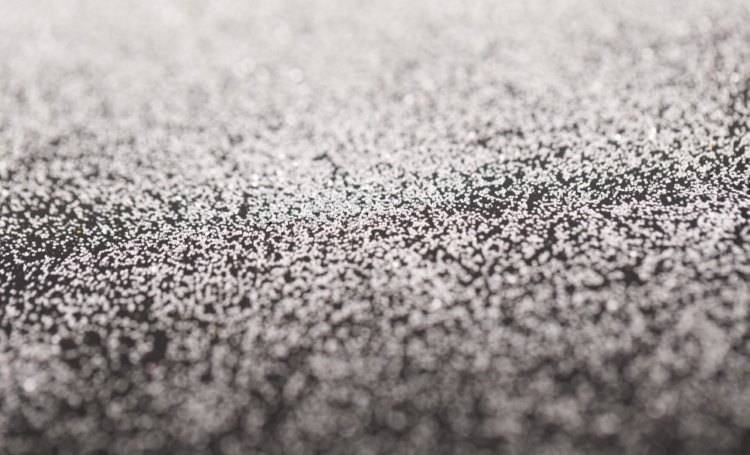
颗粒厚度的重要性
在为 XRF 分析准备压制颗粒时,首要考虑的是确保颗粒在 X 射线束面前对所有被测元素都是 "无限厚"。这意味着颗粒厚度应超过样品中最高能量元素的逸出深度。如果球团太薄,样品中产生的 X 射线在到达探测器之前就会被重新吸收,从而导致元素浓度被低估。
元素的逸出深度取决于其能级,能级越高的元素通常逸出深度越深。例如,原子序数较高的元素(如铁、铜)的逸出深度要比能量较低的元素(如钠、镁)深。因此,颗粒的厚度必须足以容纳相关元素的最深逸出深度。
计算所需的颗粒厚度
要确定所需的颗粒厚度,必须考虑样品中最高能量元素的逸出深度。逸出深度可以通过样品中元素的质量吸收系数来计算。质量吸收系数是衡量材料对 X 射线吸收程度的指标,取决于元素的原子序数和 X 射线的能量。
在实际应用中,对于直径 32 毫米的球团,用 8-10 克样品制成的球团,或者对于直径 40 毫米的球团,用 13-15 克样品制成的球团,对于目前最强大的波长色散 X 射线荧光 (WDXRF) 仪器所能测量的元素来说,一般都是足够的。这些重量可确保颗粒有足够的厚度,以防止 X 射线的再吸收,并提供准确的分析结果。
颗粒厚度方面的常见错误
制备压制颗粒最常见的错误之一就是低估了所需的厚度。如果颗粒的厚度不足以容纳被测元素的最深逸出深度,就会出现这种情况。因此,样品中产生的 X 射线可能会被重新吸收,导致测量结果不准确。
另一个常见错误是没有考虑样品的平均原子质量。样品的吸收能力与其平均原子质量成正比,这意味着较重的元素比较轻的元素吸收更多的 X 射线。因此,在确定所需的颗粒厚度时,考虑样品的平均元素组成至关重要。
污染因素
除了颗粒厚度,污染也是影响 XRF 分析质量的另一个关键因素。污染可能发生在样品研磨过程中,也可能来自样品制备设备或样品间的交叉污染。为尽量减少污染,必须使用清洁的设备,并确保样品制备过程在受控环境中进行。
颗粒制备的最佳实践
为确保 XRF 分析准确可靠,必须遵循颗粒制备的最佳实践。这包括使用适量的样品以达到所需的颗粒厚度、选择合适的粘合剂以及在压制过程中施加一致的压力。注意制备过程中的细节和一致性是减少误差和获得高质量分析结果的关键。
总之,压制颗粒的厚度是 XRF 分析中的一个关键因素,直接影响分析结果的准确性和可靠性。通过确保颗粒有足够的厚度以适应被测元素的最深逸出深度,并遵循颗粒制备的最佳实践,分析师可以获得样品中元素的精确测量结果。
压力应用:平衡压缩和均匀性
在颗粒压制过程中获得最佳压力对于制造无空隙、性能稳定的高质量颗粒至关重要。这一过程需要施加适当的压力来压缩样品并使粘合剂再结晶,从而确保最终产品既致密又均匀。本节将深入探讨压力应用的关键方面,包括过压和欠压的影响,以及为样品获得最佳压力的技术。
正确施压的重要性
压制颗粒的主要目的是消除颗粒内的空隙,因为空隙会严重影响样品中轻元素的强度。压制好的颗粒应该足够致密,以防止出现任何内部空隙,确保样品和粘合剂的均匀分布。要做到这一点,必须施加足够的压力来完全压缩样品并使粘合剂重新结晶。
实验和最佳压力范围
为特定样品找到最佳压力需要进行实验。首先对样品施加越来越大的压力,观察较轻元素的强度。大多数样品在 25-35 公吨 (T) 的压力下持续 1-2 分钟即可达到最大强度。这个范围是一个很好的起点,但个别样品可能需要根据其特定属性进行调整。
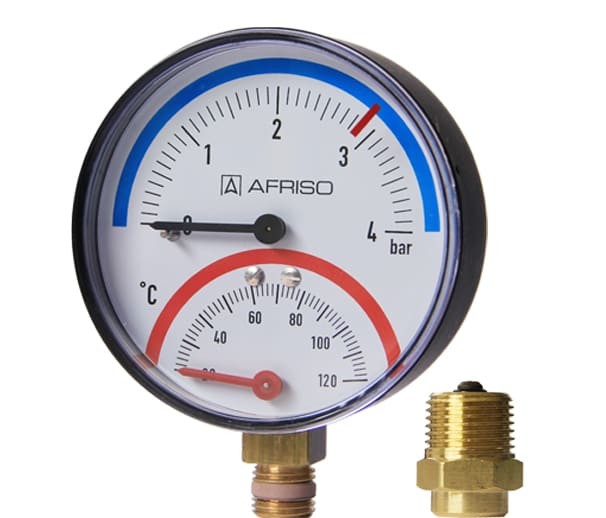
避免过压和欠压
过压可能会导致一些问题,包括超过压实物的断裂强度,造成裂缝或 "封顶",即颗粒顶部与其他部分分离。超高的压力并不一定能产生更好的颗粒,反而会弊大于利。另一方面,压力不足会在球团中留下空隙,导致结果不一致,并降低轻质元素的强度。
最佳压力应用技巧
-
缓慢释放压力:施加必要的压力后,应缓慢释放,以防止颗粒表面开裂。快速释放压力可能会导致应力断裂,影响颗粒的完整性。
-
模具对准和装料:确保压力机和模具正确对齐,以施加均匀的压力。向模套筒过量填充粉末会导致压缩不均匀,应予避免。装模量不超过钢材屈服强度的 50%,以防超出其承受能力。
-
颗粒尺寸:保持颗粒高度和直径之间的比例平衡。长度明显大于直径的颗粒会在顶部柱塞附近承受更大的应力,导致开裂。如果压制较长的颗粒,可考虑使用较小的力,润滑模具,并在底板和套筒之间使用 O 形圈,以更均匀地分散应力。
-
均匀的粉末分布:将样品混合物移入模腔时,应确保其均匀分布。分布不均会导致压制不一致和颗粒内出现空隙。
压力应用的实用步骤
- 固定压粒机:将模具固定在压制腔中,并确保其正确对齐。
- 转移样品:使用金属刮刀将研磨好的混合样品均匀地撒入模腔。
- 分散微粒:插入压模器并旋转,使颗粒均匀分布。
- 固定模组:将模具组转移到液压颗粒机上,并通过旋转滚轮将其紧紧固定。
- 施加压力:关闭液压机阀门,拉动水平仪施加压力,直至手柄拧紧。
- 释放压力:释放模具时,首先松开压力,然后向上移动压力机的上轮,最后取出模具。
通过仔细平衡压缩和均匀性,可以获得符合实验要求的高质量颗粒。适当的压力应用,再加上对每个步骤细节的关注,可确保您的颗粒致密、无空隙且性能一致。
稀释比例:精确结果的微调
稀释比在 X 射线荧光 (XRF) 分析中起着至关重要的作用,影响着分析结果的准确性和可靠性。正确确定和应用适当的稀释比对于减少与样品制备和基质效应相关的常见问题、确保准确反映样品的元素组成至关重要。
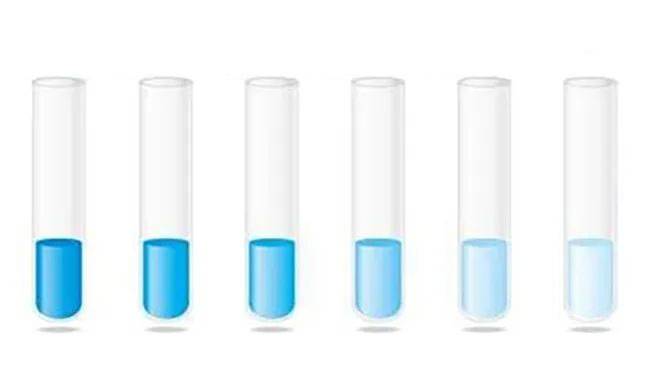
稀释比对 XRF 分析的影响
在 XRF 分析中,稀释比直接影响样品发射的 X 射线的强度。精心选择的稀释比可以平衡基体效应,如吸收和增强,这些效应会使测量强度失真。当样品中的元素吸收了其他元素发射的 X 射线,从而降低了到达探测器的 X 射线强度时,就会发生吸收。另一方面,当样品中的高能元素激发了被分析元素的原子,从而增加了 X 射线的强度时,就会出现增强现象。
通过仔细选择稀释比,可以将这些基质效应降至最低,从而获得更准确、更可重复的结果。适当的稀释比可以确保样品既不会太浓,导致吸收过多,也不会太稀,导致信号强度弱,难以准确测量。
确定适当的稀释比
确定适当的稀释比需要理论考虑和实际实验相结合。目标是获得均匀的混合物,使样品均匀地分布在基质材料中。以下是一些需要遵循的关键步骤:
-
了解样品成分:首先要彻底了解样品的元素组成。这包括了解存在的主要元素、次要元素和微量元素的浓度。这些信息对于预测潜在的基质效应至关重要。
-
选择合适的基质材料:基质材料应具有化学惰性,其成分应能最大限度地减少吸收和增强效应。常见的基质材料包括四硼酸锂(LiBO₂)和硼酸(H₃BO₃),它们能够与各种类型的样品形成稳定、均匀的混合物。
-
进行初步稀释:从一系列稀释比开始,测量由此产生的强度。利用这些测量结果来评估不同比率对 X 射线强度的影响。寻找一个强度稳定且基质效应最小的比率。
-
优化均匀性:确保样品被细磨至粒度小于 75 微米。这对获得均匀的混合物至关重要,而均匀的混合物是进行精确 XRF 分析的关键。颗粒越细,混合物就越均匀,最终颗粒中出现空隙和不均匀表面的可能性就越小。
-
评估稳定性和可重复性:确定合适的稀释比例后,应进行多次测量,以确保稳定性和可重复性。结果的变化可能表明样品制备过程存在问题,如混合不完全或粒度变化。
与稀释不当有关的常见问题
稀释不当会导致 XRF 分析中的几个常见问题:
-
过度吸收:过度浓缩的样品会导致过度吸收,即样品发射的 X 射线被样品中的其他元素大量吸收。这会导致低估某些元素的浓度。
-
信号强度弱:相反,样品浓度不足会导致信号强度较弱,从而难以获得准确的测量结果。对于痕量元素来说,这尤其是个问题,因为痕量元素可能不会产生足够强的信号,从而无法被可靠地检测到。
-
基质效应:不适当的稀释会加剧基质效应,如吸收和增强。这些效应会扭曲测量强度,导致结果不准确。
-
不均匀混合物:如果样品研磨不细或稀释比例未优化,产生的混合物可能不均匀。这可能导致测量强度的变化,即使在同一样品中也是如此,从而降低了结果的可靠性。
结论
微调稀释比是获得准确可靠的 XRF 分析结果的关键步骤。通过仔细选择适当的稀释比并确保混合物的均匀性,可以最大限度地减少基质效应以及与样品制备相关的其他常见问题。这种方法不仅能提高测量的准确性,还能增强结果的可重复性,从而更容易比较不同样品和实验的数据。
样品间交叉污染:防止干扰
样品间交叉污染是分析实验室的一个关键问题,可能导致结果不准确和数据完整性受损。本节将深入探讨最大限度减少交叉污染的方法、清洁协议的重要性以及确保样品纯度的最佳实践。
了解交叉污染
当一种样品的残留物干扰另一种样品的分析,导致结果偏差时,就会发生交叉污染。这在分析多种类型样品的环境中尤为严重,因为随着样品的多样性,污染的风险也会增加。例如,如果粉碎机等样品制备设备在两次使用之间没有彻底清洁,就会将一种样品中的元素带入下一种样品中,从而使分析结果失真。

尽量减少交叉污染的方法
-
使用专用设备:最大限度减少交叉污染的一个有效方法是为特定类型的样品使用专用设备。这可确保一种类型样品的残留物不会干扰另一种类型的样品。例如,金属样品专用粉碎机可以防止金属元素进入非金属样品。
-
彻底的清洁规程:执行严格的清洁规程至关重要。每次使用设备后,都应按照标准程序进行清洗。这包括使用适当的溶剂或清洁剂,并确保清除所有残留物。例如,钢制研磨容器应使用能溶解铁、镍和铬残留物的溶剂进行清洗。
-
样品制备技术:样品制备技术也会影响交叉污染的风险。例如,在为 XRF 分析制备校准标准时,必须使校准标准的基质与样品的基质相匹配。这有助于提高准确度并降低污染风险。此外,使用带有分析证书的高质量校准空白对照,可以增强对校准过程完整性的信心。
-
使用样品夹:对于较小和较薄的样品,使用样品夹可以防止样品后面的物体干扰。这样可以保持样品与光谱仪检测窗口之间的距离一致,从而确保更准确的分析。
-
多表面测量:测试大型金属样品时,建议对多个表面进行多次测量,以获得更准确的结果。这样可以减少由于单个表面的局部污染而导致数据偏差的可能性。
清洁规程的重要性
清洁规程是防止交叉污染的基础。它们可确保设备不存在可能干扰后续分析的残留物。定期维护并遵守启动和关闭的标准操作程序 (SOP) 至关重要。例如,经常检查仪器以确认其是否按预期运行,可以防止出现可能导致污染的问题。
样品制备的最佳实践
样品制备的主要目标包括确保样品的均一性和控制样品原始形态的潜在干扰。对于高通量实验室来说,在速度和一次制备样品数量方面具有优势的技术尤为重要。不过,必须在速度与准确性和完整性之间取得平衡。
结论
防止样品间交叉污染对保持分析结果的准确性和可靠性至关重要。通过采用专用设备、严格的清洁规程和最佳的样品制备方法,实验室可以大大降低污染风险。这不仅能确保单项分析的完整性,还有助于提高实验室数据的整体可信度。
X 射线荧光颗粒制备中减少误差的最佳做法
说到 X 射线荧光 (XRF) 分析,结果的质量在很大程度上取决于样品的制备。为 XRF 分析制作压制颗粒的过程是一个关键步骤,会对数据的准确性和可靠性产生重大影响。为了最大限度地减少误差并确保结果的一致性,必须遵循 XRF 图谱制备的最佳实践。本节概述了方法开发、关注细节和一致性的关键策略,以减少 XRF 样品制备过程中的错误。
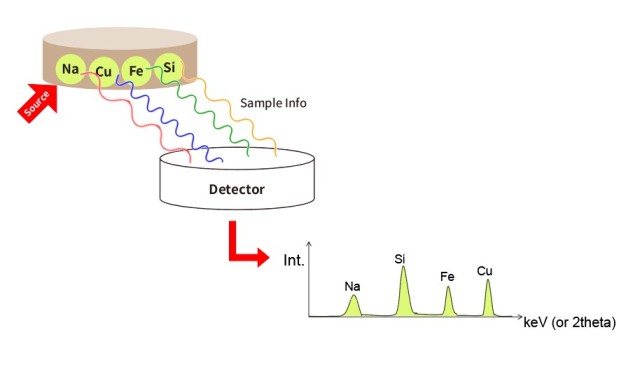
方法开发
要减少 XRF 晶粒制备过程中的误差,首先要开发一种可靠的方法。这需要了解所分析样品的具体要求,并据此调整制备过程。用于 XRF 分析的样品种类繁多,每种样品都可能具有独特的特征,需要对制备方法进行调整。例如,样品的粒度、粘合剂的选择和稀释比例都是必须仔细考虑的关键因素。
-
颗粒大小:样品的粒度会严重影响颗粒的均匀性,进而影响 XRF 分析的准确性。一般建议使用小于 100 微米的粒度,以确保样品在颗粒内的均匀分布。较大的颗粒会导致不均匀,从而导致读数不一致。
-
粘合剂的选择:颗粒制备过程中使用的粘合剂对确保颗粒的完整性和稳定性至关重要。常见的粘合剂包括硼酸盐玻璃、纤维素和蜡。粘合剂的选择应基于与样品的兼容性和 XRF 分析的具体要求。例如,某些粘合剂可能会引入干扰分析的元素,因此必须选择能最大限度减少此类干扰的粘合剂。
-
稀释比:稀释比是指样品与粘合剂的比例。适当的稀释比可以确保样品均匀地分布在颗粒中,从而降低某些元素过高或过低的风险。最佳稀释比取决于样品的成分和分析要求。通常需要进行一系列测试,以确定特定样品的最佳稀释比。
注重细节
在 XRF 颗粒制备过程中,最重要的是注意细节,以尽量减少误差。制备过程中的微小偏差都可能导致分析结果出现重大差异。因此,保持制备过程中每一步的一致性至关重要。
-
压力应用:压制颗粒过程中施加的压力大小是影响颗粒密度和均匀性的关键因素。压力不足会导致颗粒松散,而压力过大则会导致样品压缩不均匀。最佳压力应根据样品的特性和 XRF 分析的具体要求来确定。施加的压力必须保持一致,以确保结果的可重复性。
-
颗粒厚度:最终颗粒的厚度会影响 XRF 分析的灵敏度和准确性。太薄的颗粒可能无法提供足够的信号,而太厚的颗粒则可能导致吸收效应,从而使结果失真。理想的厚度通常在 1 到 3 毫米之间,具体取决于样品的成分和分析要求。
-
样品间交叉污染:样品间的交叉污染是 XRF 分析中常见的误差来源。为了最大限度地降低这种风险,必须在样品制备之间彻底清洁所有设备和表面。这包括颗粒压制机、样品容器和过程中使用的任何其他工具。此外,为每个样品使用专用工具可进一步降低交叉污染的风险。
一致性
制备过程的一致性是减少 XRF 分析错误的关键。这包括制定标准操作程序 (SOP),定期进行质量控制 (QC) 和质量保证 (QA) 检查。
-
标准操作程序 (SOP):制定并遵守 SOP 可确保制备过程中的每一步都始终如一地执行。标准操作程序应包括样品制备的详细说明,包括颗粒大小、粘合剂选择、稀释比例、压力应用和颗粒厚度。定期培训和记录制备过程有助于确保所有人员始终如一地遵守 SOP。
-
质量控制 (QC) 和质量保证 (QA):质量控制和质量保证程序对于监控 XRF 分析的准确性和可靠性至关重要。这包括使用有证标准物质 (CRM)、空白、重复和副本来验证结果的准确性。定期 QC 检查有助于确定与预期结果的任何偏差,并及时调整制备过程。
-
基质匹配:基质匹配是指制备与未知样品成分相似的样品,以尽量减少基质效应。这有助于减少因样品成分差异(如吸收或增强效应)造成的误差。在分析成分各异的复杂样品时,基质匹配尤为重要。
结论
总之,要减少 XRF 粒子制备过程中的误差,需要将方法开发、关注细节和一致性结合起来。通过仔细考虑粒度、粘合剂选择、稀释比、压力应用和颗粒厚度等因素,并制定 SOP 和定期进行 QC 和 QA 检查,可以最大限度地减少误差,确保 XRF 分析结果准确可靠。成功进行 XRF 分析的关键在于精心制备样品,因为即使是微小的偏差也会导致最终结果出现重大差异。
结论:实现 XRF 分析的精确性
掌握压片机 XRF 样品制备方法对于获得准确的结果至关重要。通过解决粒度、污染、粘合剂选择、颗粒厚度、压力应用、稀释比和交叉污染等常见问题,可以显著提高 XRF 分析的精度。坚持最佳实践并保持对细节的一丝不苟,可确保颗粒制备的每个方面都得到优化,最终实现可靠、一致的分析结果。在完善制备技术方面投入时间,将获得更准确的数据和对样品更深入的了解。
相关产品
- XRF & KBR 压片机自动实验室液压机
- FTIR的XRF & KBR塑料环实验室粉末颗粒压片模具
- XRF & KBR 钢环实验室粉末压片模具,用于 FTIR
- XRF硼酸实验室粉末颗粒压片模具
- 实验室液压压片机,适用于XRF KBR FTIR实验室应用
